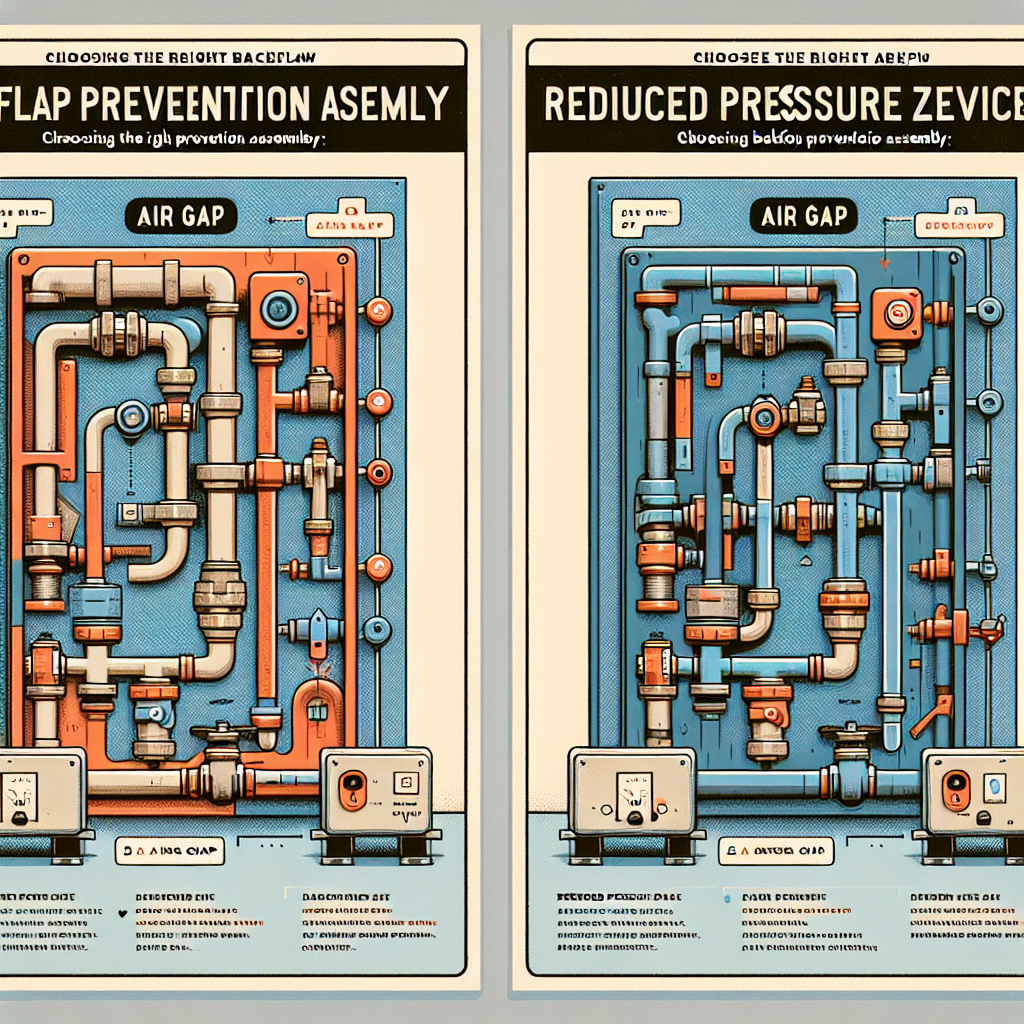Backflow prevention is crucial for ensuring the safety of our drinking water. When water flows backward in a plumbing system, it can contaminate clean water supplies, posing health risks and compromising water quality. To combat this issue, various backflow prevention assemblies have been developed, with two of the most common being Air Gap and Reduced Pressure Zone (RPZ) devices. If you’re a property owner, facility manager, or simply someone interested in maintaining water quality, this guide will help you make an informed decision.
Understanding Backflow and Its Risks
Before diving into the specifics of each device, it’s essential to understand what backflow is and why prevention is necessary. Backflow occurs when water flows in the opposite direction than intended, often due to changes in pressure. This reversal can lead to the contamination of drinking water with hazardous substances, such as bacteria, chemicals, or sediments from plumbing systems. Consequently, implementing effective backflow prevention is not just a regulatory requirement; it’s a public health necessity.
What is an Air Gap?
An air gap is a simple yet highly effective method of backflow prevention. This technique requires a physical separation between the potential contaminant and the public water supply. For instance, the distance between the outlet of a water supply pipe and the top of the receptacle (like a sink or tank) must be a minimum of two times the diameter of the pipe.
Benefits of an Air Gap
- Simplicity: Air gaps are easy to understand and implement. There are no moving parts, which means minimal maintenance is required.
- Cost-Effective: Generally, air gaps are less expensive to install, making them an attractive option for homeowners and businesses alike.
- High Reliability: Since there are no mechanical components, the risk of failure is significantly reduced. An air gap will function effectively as long as the design meets regulatory standards.
Limitations of an Air Gap
- Space Requirements: Air gaps require a specific amount of vertical space, which might not always be feasible in confined areas.
- Potential for Contamination: If not properly designed or maintained, air gaps can still pose risks if contaminated water splashes back into the supply line.
What is a Reduced Pressure Zone (RPZ) Device?
A Reduced Pressure Zone (RPZ) device is a more complex backflow prevention assembly that features mechanical components. It usually consists of two check valves, a pressure differential relief valve, and a test cock. RPZ devices are designed to be installed where the risk of backflow is significant, especially in commercial or industrial settings.
Benefits of RPZ Devices
- Robust Protection: RPZ devices provide a high level of protection against backflow, particularly from substances that are considered hazardous.
- Versatility: They can accommodate varying water pressures and are suitable for a wider range of applications compared to air gaps.
- Detection of Malfunctions: With test cocks for monitoring, it’s easier to inspect and maintain these devices, ensuring they operate correctly.
Limitations of RPZ Devices
- Higher Initial Cost: RPZ devices are generally more expensive to purchase and install due to their complexity.
- Maintenance Requirements: These devices require regular maintenance and testing to ensure they are functioning effectively, which adds to the long-term cost.
Key Considerations When Choosing Between Air Gap and RPZ Devices
When deciding on the appropriate backflow prevention assembly for your needs, consider the following factors:
1. Type of Property
Residential properties may benefit more from simple air gaps, while commercial or industrial properties with a higher risk of contamination should opt for RPZ devices. Assess your property type and potential backflow hazards.
2. Space Availability
Air gaps require significant vertical space for effective installation. If your plumbing system has limited space, an RPZ device may be a more suitable choice, despite its complexity.
3. Budget
Evaluating your budget is crucial. While air gaps are generally cheaper to install, factoring in long-term maintenance costs for RPZ devices is essential for a well-rounded budget assessment.
4. Regulatory Compliance
Be sure to check local plumbing codes and regulations. Some areas may have specific requirements dictating which backflow prevention assemblies are permissible for certain applications.
Conclusion: Making an Informed Decision
When it comes to backflow prevention, both Air Gaps and RPZ devices offer distinct advantages and challenges. The right choice depends on your specific situation, including property type, space constraints, budget, and local regulations.
Ultimately, safeguarding your water supply is a vital responsibility. By understanding the differences between these two backflow prevention systems, you can make an informed decision that protects both your health and the public water supply. Whether you opt for the straightforward simplicity of an air gap or the robust reliability of an RPZ device, ensuring the safety of your drinking water is an investment worth making.
By providing this comprehensive overview, we hope you gain valuable insight into the nuances of backflow prevention assemblies, helping you protect the water quality and safety of your home or business.


